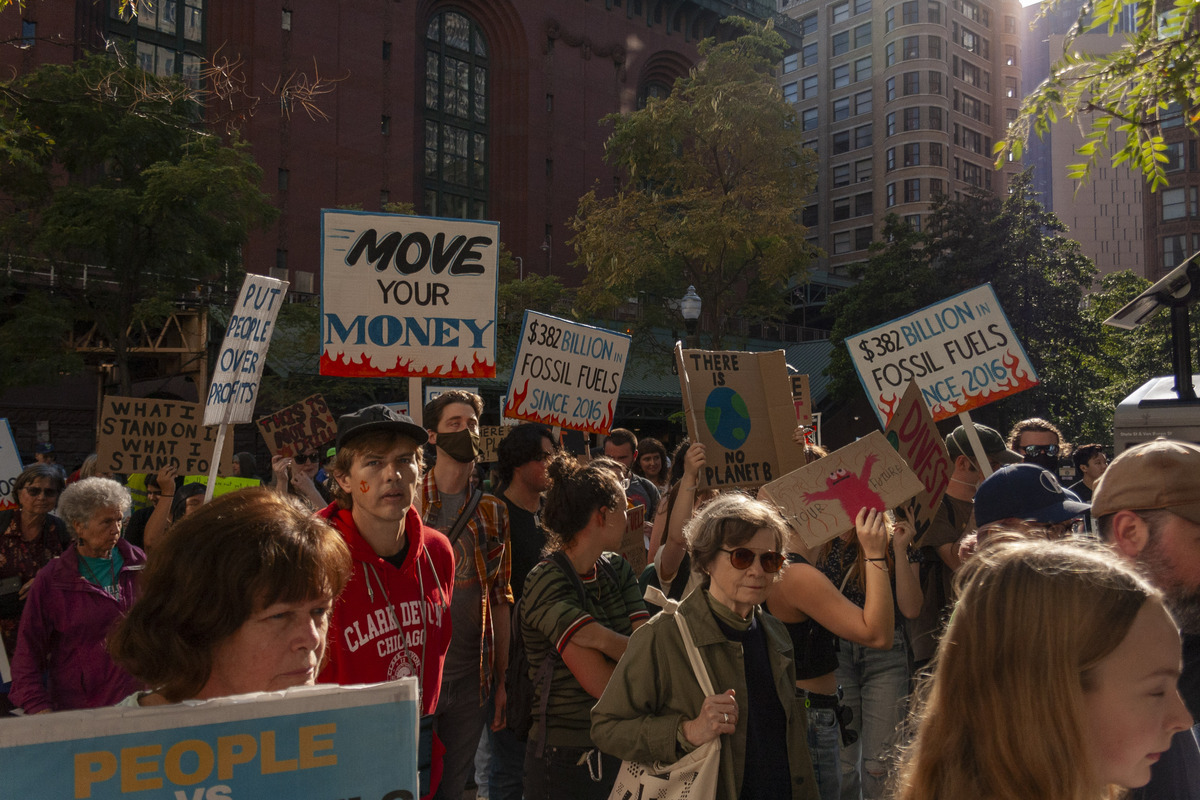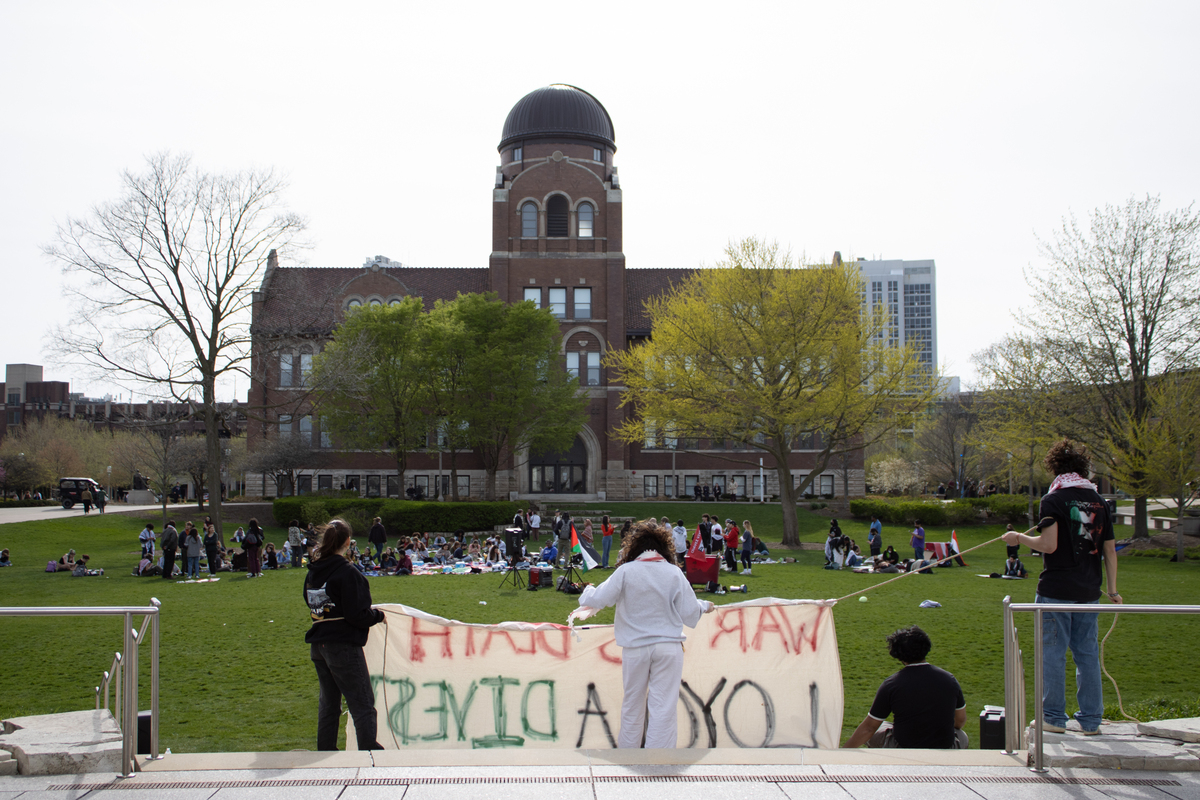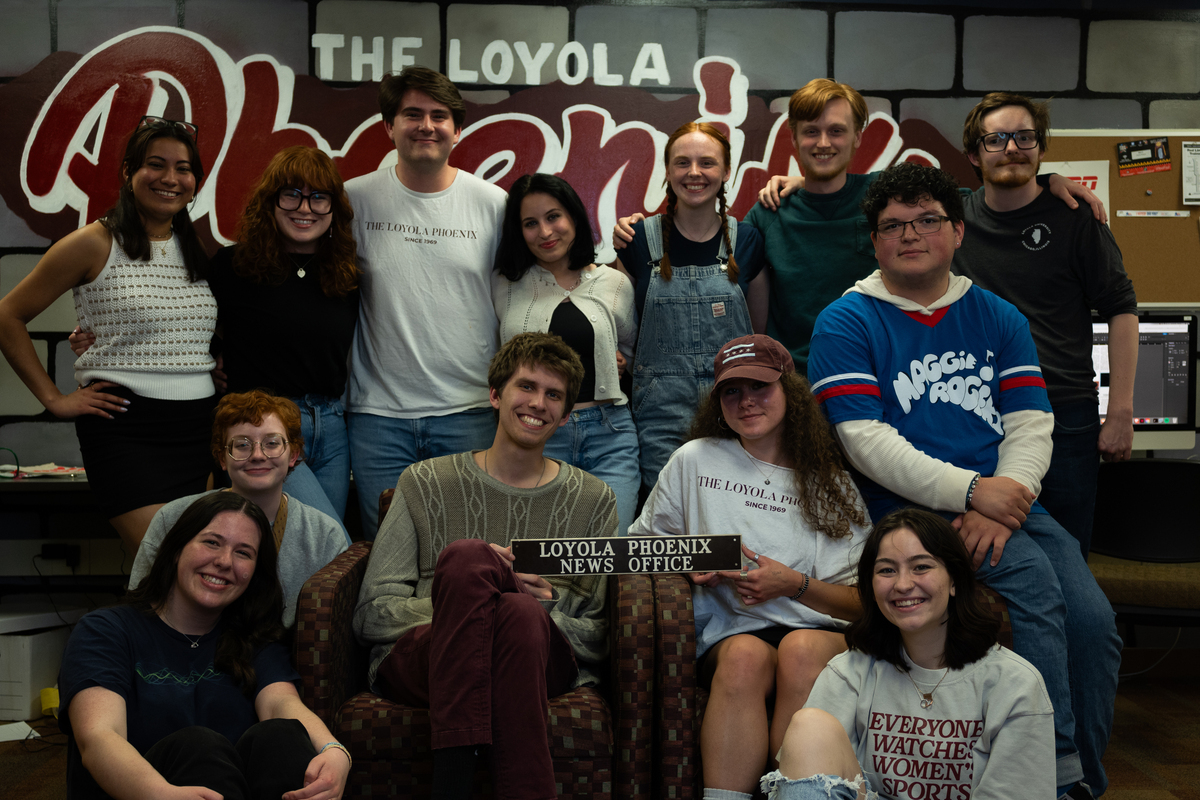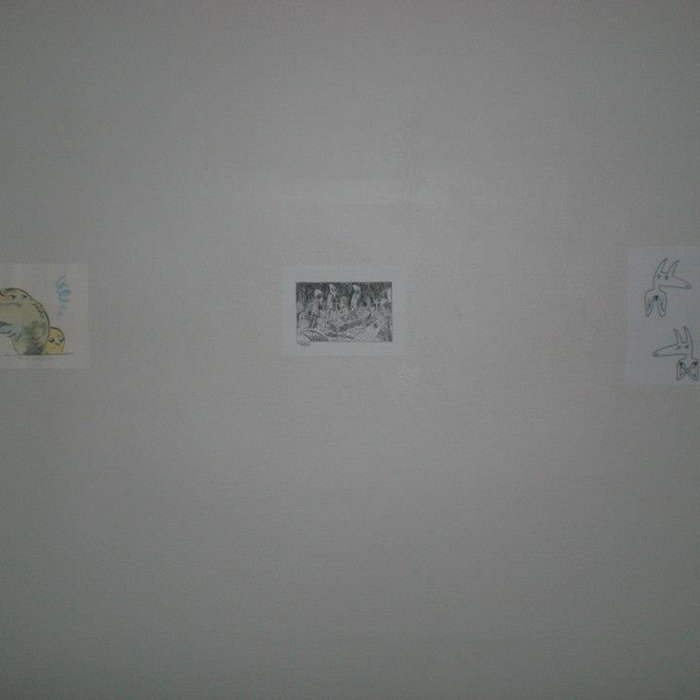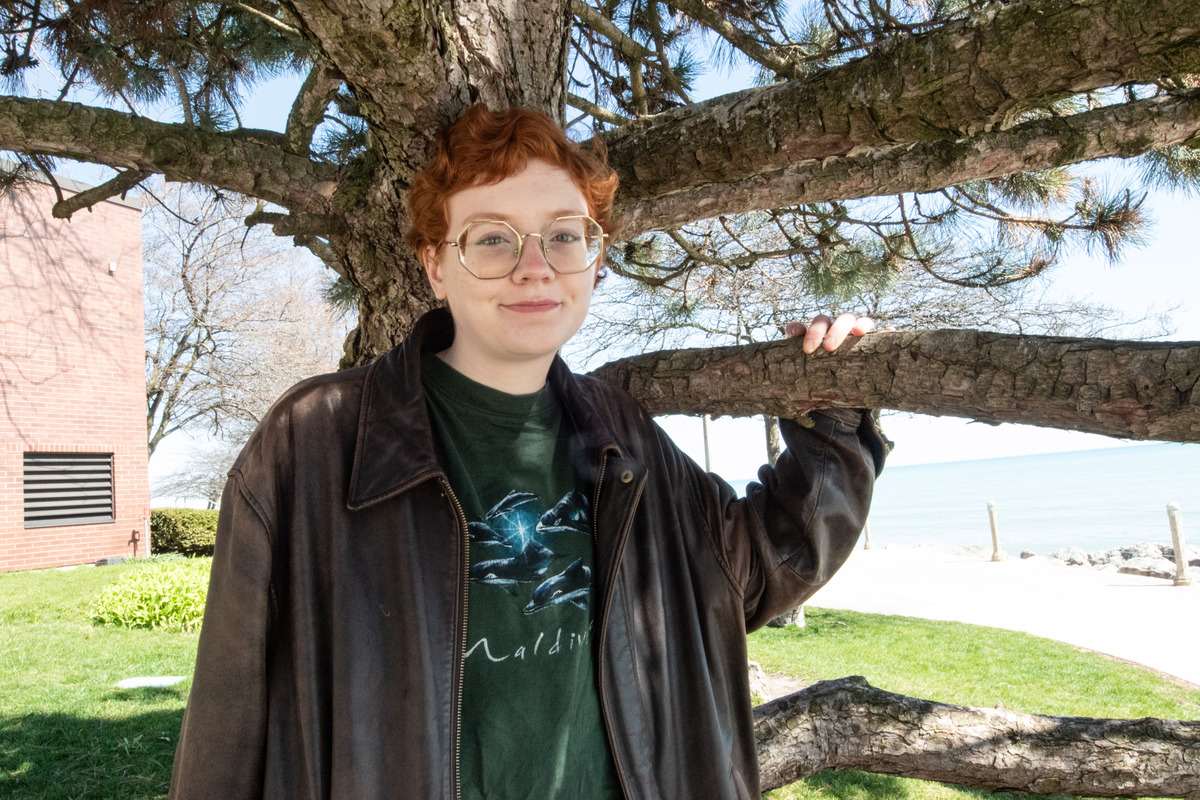Thirty-four buildings at Loyola were impacted by flooding on Sept. 11, which caused temporary closures and left some students with water in their residence halls.
Flooding Impacts 34 Loyola Buildings After Heavy Rainfall
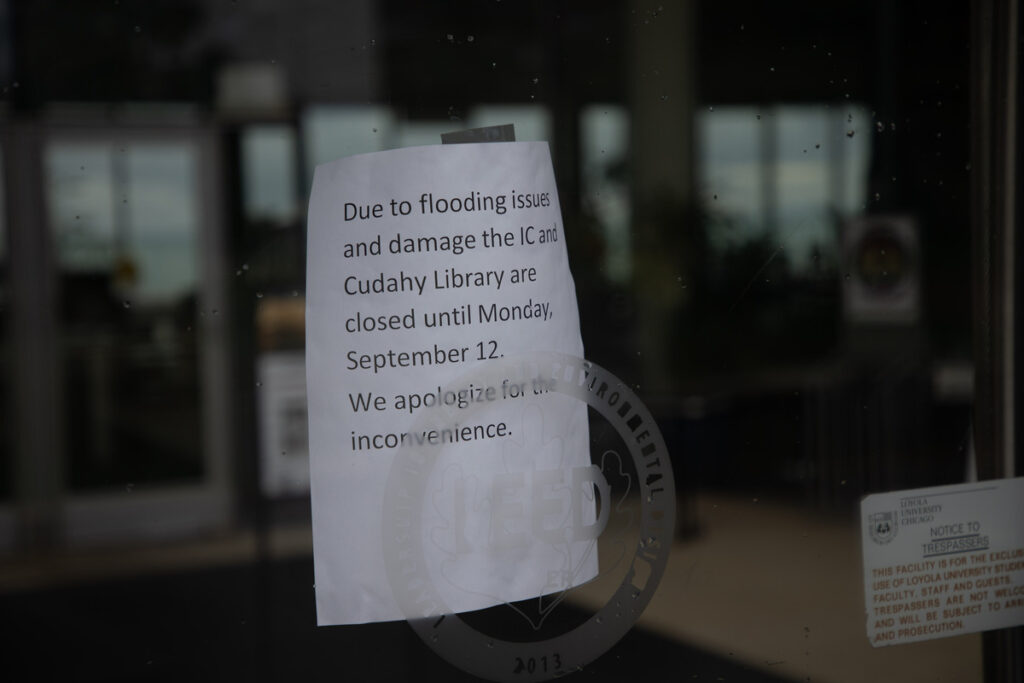
Thirty-four buildings at Loyola’s Shore Campus (LSC) were impacted by flooding on Sept. 11, which caused temporary closures and left some students with standing water in their residence halls, according to Kana Henning, senior associate vice president of facilities for Loyola.
The Information Commons (IC), first and fourth floor of the Damen Student Center, Cudahy Library, Marquette, Marquette South and Simpson Dining Hall were all affected by the flooding, according to Henning.
These incidents followed a flash flood alert from the National Weather Service, which lasted from approximately 9:10 a.m. to 1:45 p.m. After the rainfall, residents in the greater Chicago area experienced similar issues with flooding, according to a newsletter from 49th Ward Alderwoman Maria Hadden.
“On Sunday, the north side of Chicago experienced a supercell storm, wherein parts of the city received 4 inches of rain in a short period of time,” Hadden wrote. “This resulted in several buildings, including my own, flooding.”
Henning said the university plans on taking measures to prevent similar flooding issues from happening in the future by making the campus more resilient to climate change.
“What happened on Sunday was pretty unprecedented, and we got a lot of flooding in buildings that have never flooded before, so we are going to have to start looking at this a little more holistically,” Henning said.
Henning said there are many things which can be controlled on Loyola’s campus to help with flooding issues. Some items Henning listed included adding additional stormwater vaults to the campus, employing green roofs to buildings and using sidewalks that allow water to pass through to the ground.
Henning explained all of the buildings are connected to city storm systems, which were overwhelmed with rainwater from the flash flooding, leaving nowhere for the water from the university building drains to go, meaning some streets are more susceptible to flooding.
“Unfortunately, just like many other residents in the City of Chicago, we experienced that backup from all of that pressure in the pipes up into our buildings, whether that be through floor drains or similar plumbing fixtures like toilets or sinks,” Henning said.
The university received more than 200 reports of damage, all of which have been examined by a clean-up crew according to Henning. She said most of these have been fully cleaned up and repaired.
“[Cleanup crews are doing] everything from extracting water, shampooing carpeting, sanitizing, deodorizing our carpeting, airing it out and drying it, making sure that we have dried the space out before people go back into the space,” Henning said. “We will be following up with folks in a couple of weeks just to make sure that everything remains clean and there are no additional issues.”
While some students off campus waded through their basement apartments, students in Marquette Hall experienced flooding in their lobby and in some rooms on the upper floors, according to third-year theater major Noah Tibbetts and his roommate, second-year multimedia journalism major Nate Keough.
“The lobby was particularly drenched,” Tibbetts said. “The carpet was definitely squishy and there was puddling in areas of lower elevation.”
Keough described there being one to two inches of water in the entryway to Marquette Hall, raising concerns about the use of electronics in the building, and displacing the secretary from the front desk of Marquette South, according to a message from Keough’s RA.
Although students in Marquette South were not evacuated due to flooding concerns, some of the students in Marquette were forced to relocate until their rooms could be cleaned. The university provided rooms in other buildings for students whose dorms experienced the most water exposure to reside in until cleanup was completed, according to Henning.
Third-year Randy Brauer who lives in Marquette experienced this firsthand.
“It was about 9 a.m. on Sunday, I woke up to the sound of gushing water and I was confused,” Brauer said. “I realized it was coming from my bathroom. So, I went down the hallway towards my bathroom and I stepped in about two inches of water.”
Brauer realized the water flooding his floor was sewage water — mostly coming from the toilet — with smaller amounts of water coming from his sink and bathtub drains.
Both Keough and Tibbetts also said flood waters reached about four to five inches above the curb on Kenmore Avenue in front of their dorm, hitting the bottom of parked cars on the street.
Dr. Laura Brentner, a professor in the school of environmental science explained climate change is responsible for flooding of this scale. She brought up an event known as the one hundred years flood — a heavy rain event which occurs typically once every one hundred years. However, these rain events are becoming more and more common with the worsening of climate change, Brentner explained.
The percent of land area in the United States impacted by extreme one-day precipitation since the year 1970 has increased by approximately 20%, and is continuing to increase according to data from The Environmental Protection Agency (EPA).
Brentner explained some of the things she sees the university is doing to remain strong in the face of climate change including taking steps to reduce emissions.
“We have been working on that and changing our energy sources, we have storm water management plans and systems installed to help absorb some of that flood water into the ground rather than going into the sewage system,” Brentner said.
Brentner also commented on the difficulties the campus faces when it comes to flooding due to its proximity to Lake Michigan.
“Loyola is vulnerable because it is right on the lakeshore, and lake changes are a lot more complex and hard to predict,” Brentner said.
Buildings Affected:
Arrupe House (Jesuits) (LSC)
Belarmine Hall (LSC)
Campion Hall (LSC)
Canisius Hall (LSC)
Centennial Forum (LSC)
Coffey Hall (LSC)
Crown Center for the Humanities (LSC)
CTA Warehouse (LSC)
Cudahy Science Hall (LSC)
Cuneo Hall (LSC)
De Nobili Hall (LSC)
Fairfield Hall (LSC)
Flanner Hall (LSC)
Flex Lab (LSC)
Georgetown Hall (LSC)
Gonzaga Hall (Jesuits) (LSC)
Halas Sports Center (LSC)
Le Moyne Hall (LSC)
Main Parking Structure (LSC)
Marquette Hall (LSC)
Marquette South (LSC)
Mertz Hall (LSC)
Mundelein Center (LSC)
Norville Athletic Center (LSC)
Regis Hall (LSC)
Sherry Hall (LSC)
Simpson Living Learning Center (LSC)
Spring Hill Hall (LSC)
St. Joseph’s Hall (LSC)
Xavier Hall (LSC)
Messina Hall (LSC)
Dumbach Hall (LSC)
Information Commons (IC) (LSC)
Cudahy Library (LSC)
Featured image by Austin Hojdar | The Phoenix



